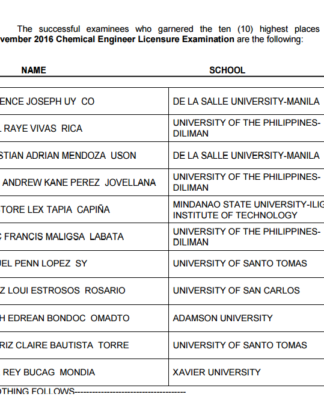 A FEW days ago, I was stuck in front of the computer in an attempt to write this issue’s editorial and I ended up staring at the blinking cursor for quite some time. I was tasked to write about UST’s relevance and contribution in building the nation, the church, and the family, and I found that doing this was a difficult undertaking. I felt that writing about the University’s role in nation-building is tantamount to writing volumes of books, and it’s quite dangerous to miss a point. Tired of wasting my time, I decided to switch to writing a chapter of my thesis and I put the Quadricentennial song, “Ako’y Isang Tomasino,” on repeat until I got my writing spirit back.
A FEW days ago, I was stuck in front of the computer in an attempt to write this issue’s editorial and I ended up staring at the blinking cursor for quite some time. I was tasked to write about UST’s relevance and contribution in building the nation, the church, and the family, and I found that doing this was a difficult undertaking. I felt that writing about the University’s role in nation-building is tantamount to writing volumes of books, and it’s quite dangerous to miss a point. Tired of wasting my time, I decided to switch to writing a chapter of my thesis and I put the Quadricentennial song, “Ako’y Isang Tomasino,” on repeat until I got my writing spirit back.
As a news writer for the ‘V’, I covered the awards night of the Quadricentennial Song Fest last year at the Albertus Magnus Auditoruim. That was when I first heard that entry composed by Industrial Engineering alumnus Gerardo Santos, and I knew right then that it would be chosen as the Quadricentennial song.
Its lyrics and musical score are poignant and are weaved thoughtfully, describing what the University had been through and what she has accomplished in the last 400 years. So let’s all sing and reflect on it on January 28, while savoring our University’s resilience, endurance and relevance. Let’s all be proud to say: Ako’y isang Tomasino!
***
It was in August when I last heard of the launching of Simbahayan project, which is touted as the Quadricentennial centerpiece project. It started in Northern Luzon in an aim to rehabilitate 400 villages in terms of medical, literacy, and community service and peace “interventions.” The project affirms UST’s pledge to charity and community service, and reaffirms the University’s selflessness. I would often tell my friends from other universities about this project, and they they admire the fact that UST has this commitment. I just hope Simbahayan will not be forgotten.
***
While we are all busy preparing for our venerable University’s Quadricentennial celebration, a friend of mine, who revisited UST’s old site in the Walled City, commented on the present condition of the ruined UST campus. He was appalled and disappointed because the ruins were “vandalized and virtually squatted upon.” He also said the “location of Plaza Santo Tomas has been occupied by vendors and shanties.” Though I have not seen it personally, it made me sad just hearing about it. I think we should initiate a move to ask the Intramuros administration to take care of, if not preserve, UST’s old site. For a school taking pride in heritage conservation (the University allots money for the restorations of painting and murals), we should not forget the original grounds that saw the beginnings of our University.
***
I hope UST’s celebration of its unending grace will not stop after all these festivities. Considering what the University has achieved, it’s only right for us to celebrate UST’s birthright and destiny beyond 2011. I pray that all of us Thomasians would inherit UST’s good faith in everything that we do, and carry the teachings and values of our beloved institution as we embark on endeavors outside the University’s walls. I think this is the only way that we can give back to UST, in gratitude for the education that she has bestowed on us. I can imagine the bliss that Archbishop Benavides feels seeing the fruit of his dreams.















